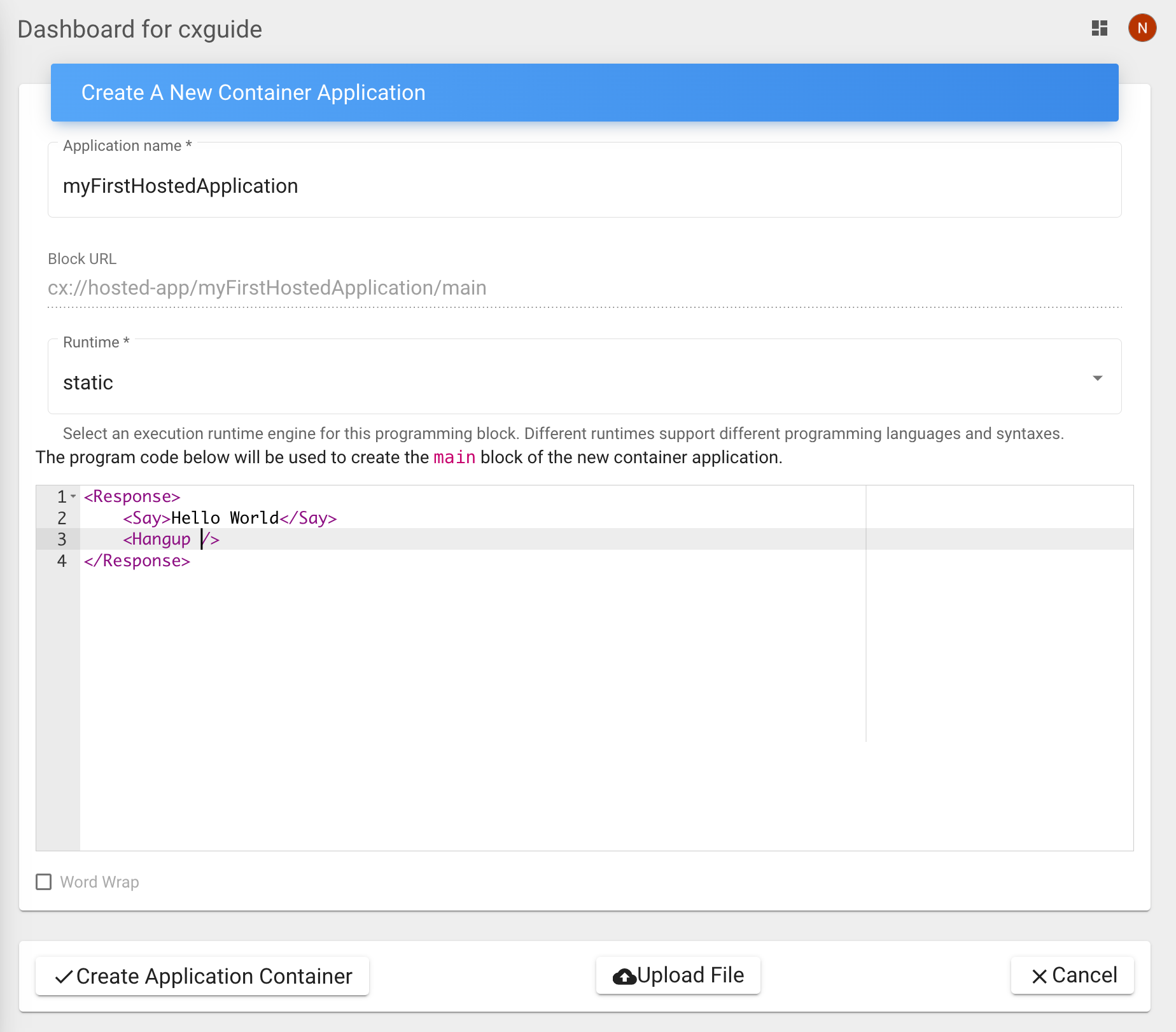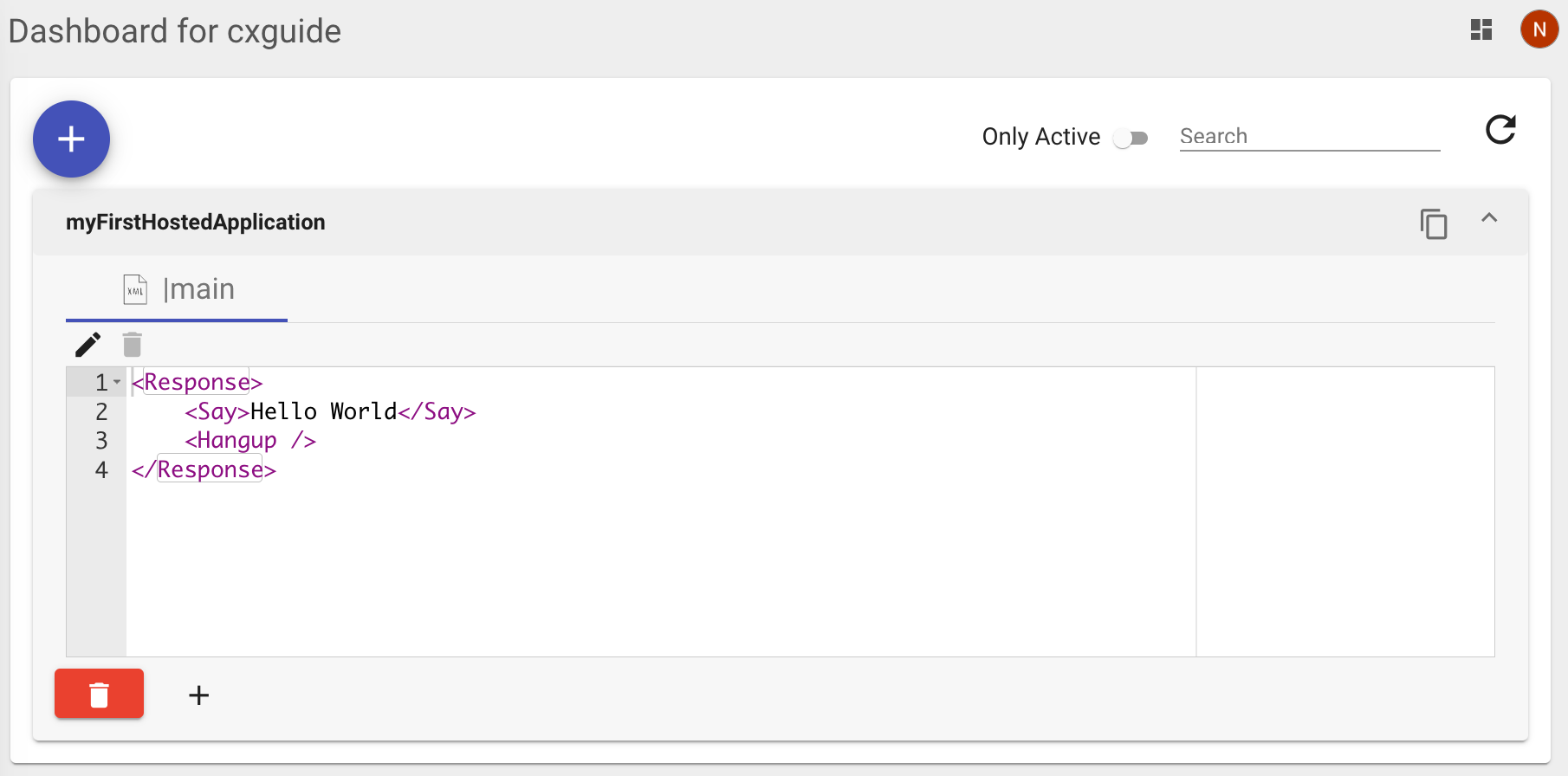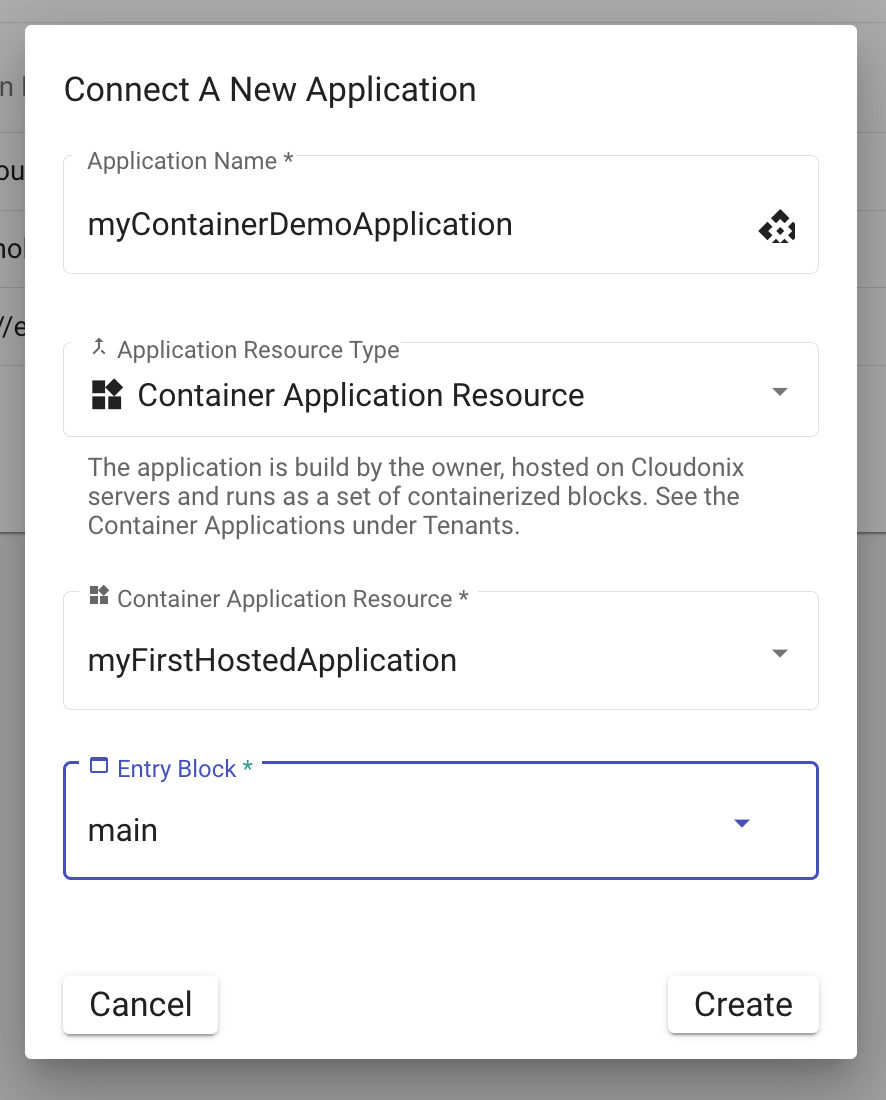Container Applications Management
Container Applications, also known as Container Applications or Container Application Resources are a special kind of voice application
that is executed inside the Cloudonix platform, without requiring the customer to maintain their own application servers.
Container Applications are available under 5 different runtimes, which are as following:
| Run-Time Engine | Description |
|---|---|
cxml | An application that is executed from a static CXML document, no additional processing is performed or any other dynamic features. |
forward | Transfer the control of the connected call to a remote URL application resource. |
javascript | An application using this engine will be written in JavaScript and will comply with running Node based Lambda functions. |
ruby | An application using this this engine will be written in Ruby and will comply with running Ruby based Lambda functions. |
select | Select the next Container Application Block to execute, based on the users DTMF (keypad) input. This runtime is useful for simple menu based applications. |
Container Application Ownership
A Container Application is owned by the Cloudonix Tenant (customer) and as such, is made available to ALL tenant owned Domains.
In order to activate a Container Application, an associated Voice Application MUST be created in the Domain and connected to the
Container Application and the relevant execution block.
Container Application Creation and Usage Workflow
Creating a cxml runtime Container Application
From the left hand menu, click the Container Applications button, a view similar to the below will appear:

Click the purple plus (+) button to create a new Container Application, the following view will appear:

For the purpose of this guide, we've selected the cxml (or static) runtime, which is the simplest to use. Click the Create Application Container button to submit
the Container Application. Once submitted, the Container Applications view will appear, showing the newly created Container Application:

A Container Application ALWAYS includes a main block, which is the first block to be executed (this is the default, but can be changed). The editor enables several functions, as detailed below:
| Icon | Description |
|---|---|
| Create a new Container Application block. Different blocks may use different runtimes. | |
| Delete a Container Application block. | |
| Edit the current Container Application block. |
Attaching Containers to Voice Applications
When creating a new voice application, select the Container Application Resource as the Application Resource Type, the
following dialog will appear:

Once created, the newly created voice application will use the provided Container Application.